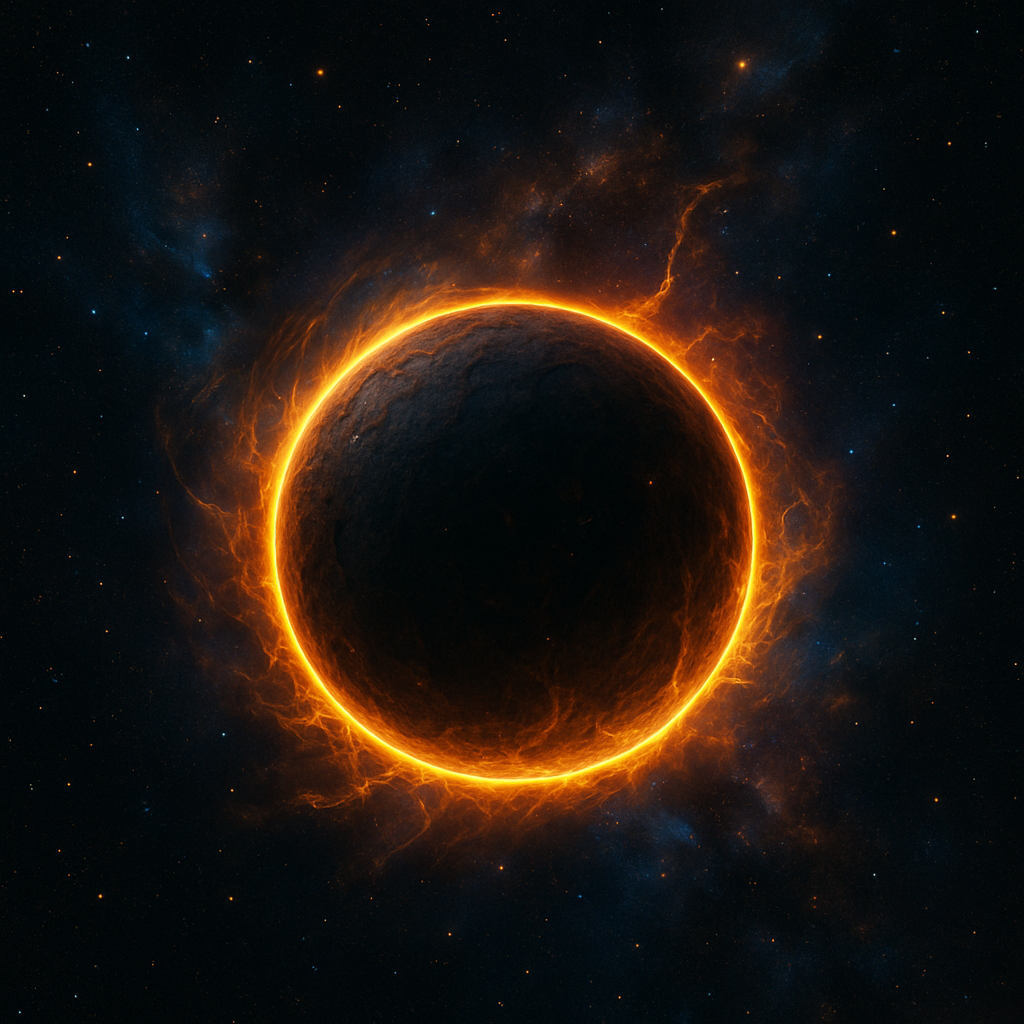Since humanity first discovered black holes, these dark giants have become absolute symbols of cosmic mystery. True devourers of matter and light, their extreme nature has inspired not only science fiction films and novels but also intense scientific debate. Yet, there exists a fascinating and lesser-known alternative that could radically change how we see the universe: gravastars.
What Are Gravastars?
The term gravastar stands for Gravitational Vacuum Star. This concept was introduced in 2001 by physicists Pawel Mazur and Emil Mottola as a possible alternative to black holes. The core idea is both simple and revolutionary: when a massive star collapses under its own weight, instead of forming a singularity (a point of infinite density), it might create a bubble of vacuum energy surrounded by an ultra-thin shell of superdense matter.
In simple terms, a gravastar is a cosmic object where extreme gravitational forces are balanced by negative pressure inside—similar to the dark energy that drives the universe’s expansion.
The Theory Behind Gravastars
To grasp the gravastar concept, we need to revisit Einstein’s general relativity, which tells us that gravity is the curvature of spacetime caused by mass or energy. In traditional black holes, this curvature becomes so extreme that it forms a singularity, a place where the known laws of physics break down.
Mazur and Mottola envisioned a different scenario: what if, before reaching that ultimate collapse, the matter underwent a phase transition into a state of vacuum energy? This would create a stable "bubble," preventing the formation of a singularity. A gravastar would thus have:
-
an inner vacuum energy core (negative pressure),
-
an ultra-thin shell of dense matter,
-
and an exterior identical to a black hole’s from a gravitational perspective.
How Are They Different from Black Holes?
At first glance, a gravastar would look exactly like a black hole: its mass and gravity would affect the surrounding space in the same way. However, there are crucial differences:
-
No singularity: the heart of the gravastar is not a point of infinite density but a quantum vacuum.
-
Event horizon?: there’s no true event horizon; the shell itself prevents matter from entering and light from escaping, but the structure isn't as "sealed" as a black hole.
-
Observational signatures: gravastars might emit vibrations or gravitational waves that are slightly different from those expected from black holes, especially during cataclysmic events like mergers.
Observations: Myth or Reality?
Currently, there’s no concrete evidence for the existence of gravastars. Our current tools, like LIGO and Virgo, detect gravitational waves from cosmic collisions, and so far, these signals match the predictions for black holes. However, as detection precision increases, new clues might emerge suggesting the presence of structures different from what we expect.
Some astrophysicists have proposed that certain “anomalous” signals might be better explained by gravastar theory rather than classical black hole models, but these remain speculative ideas for now.
Implications and Cosmic Mysteries
If gravastars do exist, the implications would be enormous. First, they could solve one of modern physics’ thorniest dilemmas: the black hole information paradox. Instead of "losing" information behind an impenetrable horizon, a gravastar might retain that information, upholding the fundamental principles of quantum mechanics.
Moreover, some theorists have suggested that gravastar-like objects might help explain the mystery of dark matter, though this idea is still in its infancy.
Whether they are a mathematical mirage or a hidden cosmic reality, gravastars are proof that our universe still holds many surprises. Every new theory, no matter how bold, reminds us that exploring the cosmos is not just a technological challenge but also an exercise in imagination and scientific creativity. Who knows—out there, beyond the stars, there may be something even stranger and more fascinating than a black hole.








Leave a Comment